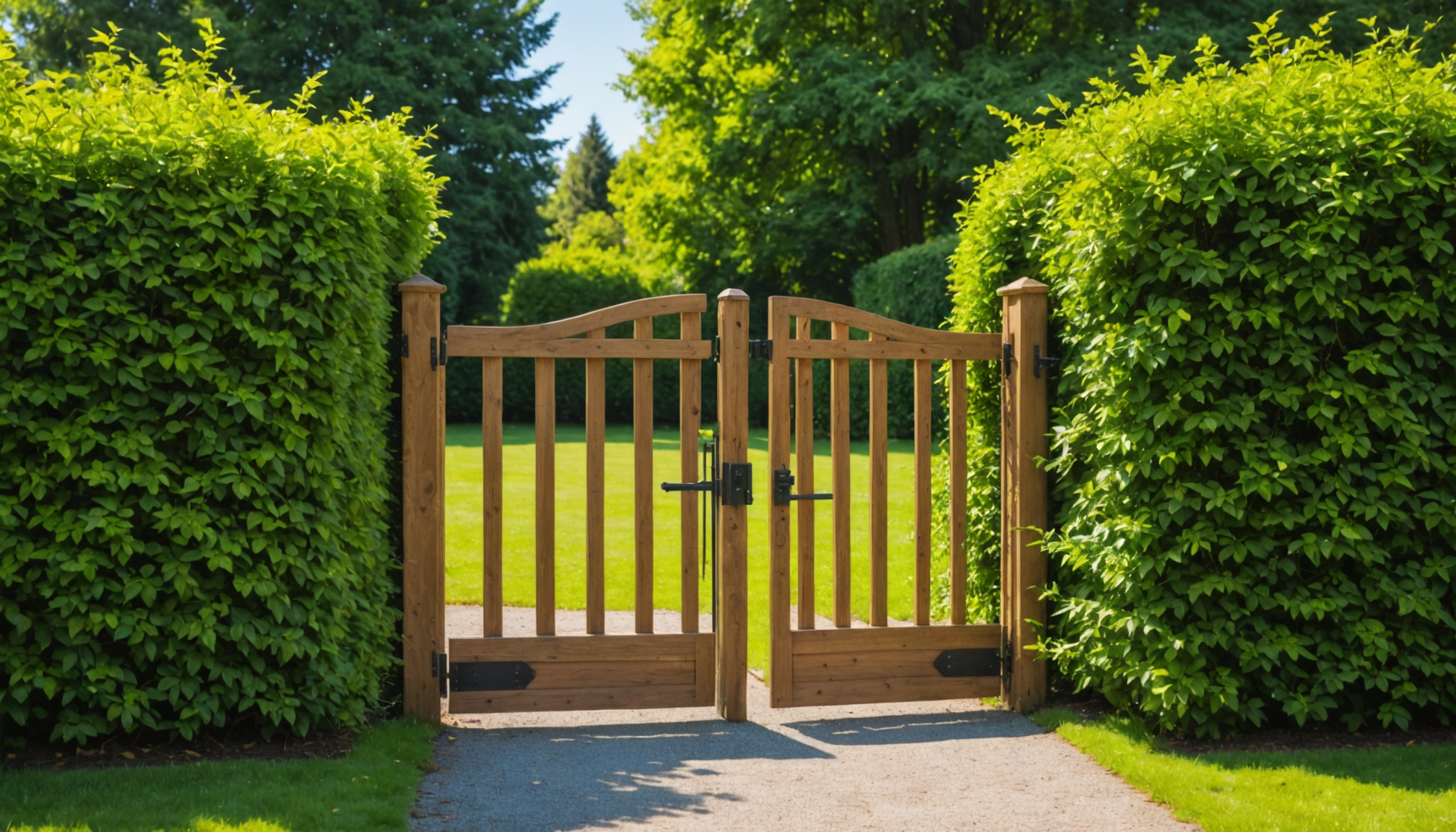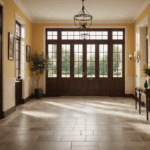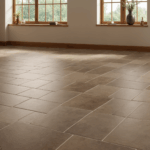Understanding the vulnerabilities of your garden is a crucial first step in safeguarding your outdoor space effectively. By assessing potential threats, you can take strategic actions to mitigate risks and optimize your security systems. This assessment begins with a comprehensive evaluation of your garden’s layout, access points, and existing security measures. Identifying these vulnerabilities allows homeowners to secure their gardens more effectively, ultimately improving not only safety but also the resale value of their property.
Start by analyzing the physical boundaries of your garden. Examine fences, walls, and natural barriers to determine if they offer sufficient protection. Look for weak spots or gaps where potential intruders could gain access. Consider the height and condition of existing fences—are they robust enough to deter unauthorized entry, or do they require reinforcement? Walls should be high enough to prevent climbing, while locked gates should be firmly secured to prevent unauthorized access.
Next, evaluate the visibility and accessibility of each entry point. These include gates, windows, and any doors leading from your house or garage into the yard. Intruders often target easily accessible and poorly visible entry points. Ensure these are well-lit and monitored to discourage any twenty attempts. Homeowner tips suggest installing extra locks or security bars on gates and windows if vulnerabilities are discovered during your assessment.
In addition to physical barriers, consider where valuable items, such as garden tools or outdoor furniture, are stored. Secure these items in a locked shed or garage, as they may attract unwanted attention if left outdoors. Also, assess whether your garden is visible from the street or nearby homes. If visibility presents a safety concern, consider planting dense hedges or installing privacy screens to limit line of sight.
Moreover, anticipate environmental factors and how they might impact security. Dense foliage might provide cover for intruders, while tall trees can offer a climbing point over fences. Regularly trimming shrubs and trees can help maintain a clear view of the garden, reducing hiding spots and potential climbing aids. Additionally, consider the proximity of your garden to public pathways or roads, as these locations might require more rigorous security solutions.
To comprehensively address your garden’s security and keep threats at bay, adopt a holistic strategy. Use the evaluation as a roadmap to strengthen vulnerable areas of your garden and look into integrating advanced security measures such as lighting and surveillance. When these steps are judiciously implemented, you can transform potential weaknesses into strengths, significantly enhancing the secure and welcoming ambiance of your entire property.
For a more structured approach, the following table compares common vulnerabilities and potential solutions:
| Vulnerability | Potential Solution |
| Low fence height | Install taller, more sturdy fencing |
| Unsecured gates | Add security locks or install new gates |
| Valuable items in open | Store in a locked shed or garage |
| Dense foliage coverage | Trim shrubs and trees regularly |
| High visibility from street | Use privacy screens or plant hedges |
An informed assessment, combined with the thoughtful application of homeowner tips and innovative security solutions, can be pivotal. This careful consideration not only fortifies your outdoor space but also contributes to increased resale value, making the endeavor an investment in both security and asset appreciation.
choosing the right fencing
To create an effective security barrier around your garden, selecting the right type of fencing is paramount. A sturdy, well-chosen fence can offer both protection and privacy, addressing vulnerabilities identified during your initial assessment. Follow these steps to make sure your fencing aligns with your security needs:
1. Determine Your Needs: Consider the primary purpose of your fence. Do you need it mainly for privacy, security, or aesthetic appeal? Knowing this will guide your selection of materials and design.
2. Select the Material: Choose materials based on durability, maintenance needs, and appearance. Common options include:
– Wood: Offers privacy and a natural look but requires regular maintenance to prevent rot and pest damage.
– Metal: Options like wrought iron are highly durable and provide a classic look but offer less privacy.
– Vinyl: This is low-maintenance and comes in various styles, combining privacy and durability.
– Chain Link: While not the most private, it’s cost-effective and can be enhanced with slats for improved privacy.
3. Factor in Height: The height of the fence is crucial for security. Ideally, fences should be at least 6 feet tall to deter intruders. Check local regulations to ensure your height complies with neighborhood codes.
4. Enhance with Features: Implement additional features to boost security:
– Pointed Tops: These can prevent climbing and add a layer of deterrence.
– Secure Gates: Invest in solid, lockable gates, and include features such as keypad entry or remote-controlled opening mechanisms for added security.
– Reinforced Fence Panels: Ensure they are securely fixed to withstand attempts of breaching.
5. Consider Visibility: Balance security needs with visibility. Solid fences deter entry but can limit the view from your home or garden. Consider integrating lattice panels or hedge-like designs at the top for a balance of security and aesthetics.
6. Professional Installation: Hire professionals to ensure the fence is installed correctly and securely. Proper installation minimizes gaps and vulnerabilities, enhancing the overall security of your property.
7. Regular Maintenance: To extend the lifespan and effectiveness of your fence, maintain it regularly by:
– Checking for and repairing any damage promptly.
– Applying protective coatings to prevent rust and decay.
– Ensuring gates and locks function properly and replacing them when necessary.
By carefully selecting and maintaining the right fencing, homeowners can significantly improve the security of their garden, contributing not only to a secure environment but also potentially enhancing the property’s resale value. Following these homeowner tips will help create an effective barrier that protects your outdoor haven from potential threats.
installing effective lighting
When it comes to enhancing the security of your garden, effective lighting plays a pivotal role. Properly installed lighting not only deters potential intruders but also improves the visibility and safety of your outdoor spaces. Here’s how you can strategically implement lighting solutions to transform your garden into a more secure environment.
First, focus on illuminating key areas that could serve as entry points or hiding spots for intruders. These include pathways, the vicinity of gates, the perimeter of fences, and around garages and sheds. By strategically positioning lights in these areas, you ensure that every potential threat point is visible and well-monitored, which is a crucial deterrent against unauthorized access. Illuminating these areas makes it more challenging for intruders to approach unnoticed, significantly reducing the risk of break-ins.
One popular option for outdoor lighting is the installation of motion-activated lights. These lights are highly effective because they only activate when movement is detected, startling and discouraging potential intruders while conserving energy during periods of inactivity. Additionally, consider using solar-powered lights as an eco-friendly and cost-effective solution, which can be strategically placed along walkways and around the garden’s edges. Solar lights harness the power of daylight and can shine throughout the night, eliminating the need for extensive wiring and reducing electricity expenses.
Incorporating smart lighting systems can take your garden security to the next level. Integrate these systems with motion sensors or pre-set routines through a mobile app to remotely control your outdoor lighting. This capability allows you to turn lights on or off regardless of your location, thereby creating the illusion of occupancy even when you’re not home, a feature that is especially appealing for homeowners seeking long-term peace of mind and potentially adding to the resale value of your home.
Moreover, varied lighting styles can also enhance aesthetic appeal without compromising security. Use uplights to highlight large trees or architectural elements on your property, while downlights can be installed above doorways or along garage entrances to cast a broad, inviting glow. These layers of light create not just a secure environment but also a warm, welcoming atmosphere that elevates the beauty of your outdoor space.
Don’t overlook the importance of regular maintenance; periodically check that all light fixtures are operational and replace bulbs as necessary. Clean fixtures to ensure optimal brightness and verify that all motion sensors are functioning correctly. Consistent upkeep guarantees your lighting system remains a robust component of your garden’s security.
By thoughtfully installing and maintaining effective lighting around your property, homeowners can significantly boost the security and appeal of their gardens. Not only do these measures protect your outdoor haven, but they also enhance the overall aesthetic and financial value of your property, benefiting both current enjoyment and future sales.
implementing surveillance systems
To elevate your garden’s security beyond physical deterrents such as fences and lighting, technology plays an indispensable role. Implementing surveillance systems is an effective measure that offers both peace of mind and a proactive security solution for your outdoor space. By strategically placing cameras and ensuring a reliable monitoring setup, homeowners can transform their garden into a highly secure environment while potentially boosting the property’s resale value.
Begin by evaluating the key areas where surveillance cameras would be most beneficial. Focus on entry points, such as gates and doors leading to the garage, high-traffic areas like pathways, and any secluded spots where intruders might seek cover. Positioning cameras in these strategic locations ensures comprehensive oversight of your property, serving as both a deterrent and a means of evidence collection in the event of security breaches.
Opt for modern security camera systems that offer high-resolution video capture and consider integrated features like night vision, which is essential for monitoring your garden after dusk. Today’s market offers a plethora of options ranging from budget-friendly to high-end models with capabilities such as pan, tilt, and zoom functions. These allow you to actively adjust the camera’s field of view, capturing wider areas or focusing on specific spots as needed.
Maximize the benefits of your surveillance system by choosing cameras with motion detection capabilities. These cameras can be configured to send alerts to your phone when movement is detected, allowing you to monitor your garden in real-time even from a distance. This feature is especially valuable for homeowners looking to maintain active rather than passive security, giving you the ability to respond promptly to any unusual activity.
Integrate your cameras into a smart home system for added convenience and control. Many contemporary systems allow you to view live video feeds, record footage, and manage settings all through mobile apps. This seamless integration not only enhances security but also adds a modern tech-savvy appeal to your property, which is often a desirable feature for potential home buyers.
Aside from cameras, consider incorporating other surveillance tools such as video doorbells and intercom systems at points of entry. These tools act as both security enhancements and communication devices, enabling you to safely interact with visitors from a centralized system accessible within your home or through your smartphone.
When implementing such a system, ensure that your surveillance equipment is installed correctly and maintains a reliable connection. Professional installation can be a wise investment, ensuring cameras are optimally placed and properly integrated into your home’s network. Moreover, make sure your equipment is secure from external access by setting up strong passwords and keeping your camera firmware updated.
Routine maintenance of your surveillance system is crucial to its efficacy. Regularly inspect cameras for any obstructions, clean lenses to ensure clear footage, and test associated software and apps to confirm they are functioning as expected. By keeping your system in top working condition, you’re better equipped to deter or respond to potential threats promptly.
In summary, implementing a comprehensive surveillance system can significantly enhance the security of your garden. By utilizing modern technology and integrating it thoughtfully, you not only safeguard your outdoor haven but also add a valuable asset to your property’s overall appeal and resale value. Remember, these homeowner tips are an investment in peace of mind and estate security, ensuring your garden remains both a safe retreat and a well-protected asset.
maintaining ongoing security measures
With your garden’s security systems in place, ensuring their continued effectiveness requires ongoing attention and maintenance. First, establish a routine for checking and maintaining the physical barriers, such as fencing and gates. Regularly inspect the fences for any signs of wear, damage, or attempts at tampering. This involves checking for rusty hinges, loose panels, or any new gaps that might have formed. Address any issues immediately to maintain the integrity of these primary defenses.
Next, ensure that your lighting systems function correctly. Conduct regular checks to verify that all bulbs are operative, and replace any that have burned out. Clean the light fixtures to ensure brightness is not obstructed by dirt or debris. For motion sensors, periodically test their responsiveness to ensure they activate when needed. Consider adjusting their sensitivity settings if they are triggered too easily or not enough.
Similarly, your surveillance systems require consistent upkeep to remain fully operational. Inspect cameras to ensure they are clean, unobstructed, and securely mounted. Periodically review recorded footage to confirm that it is clear and that the storage system is not overloaded. Ensure that software updates for both cameras and associated apps are installed promptly to protect against potential vulnerabilities and maintain the latest security advancements.
With technological systems, actively engage with their features. For example, periodically update access codes for smart locks or gated entry points. Use your system’s app to review security logs and notifications, and adjust settings as necessary to enhance your garden’s protection. Homeowner tips recommend integrating these security checks into your regular routine, ensuring they become part of standard household management.
Beyond the systems themselves, maintaining secure practices is equally crucial. Safeguard any passwords related to security apps or digital locks, and only share them with those who genuinely need access. If you believe access may have been compromised, update passwords and access codes promptly.
Continue to involve yourself with the latest advancements in garden security technology. Attend local workshops or consult security experts to stay informed of new products or techniques that may further enhance your current setup. These periodic investments in knowledge can aid in recognizing and mitigating emerging threats, reinforcing your home’s defenses.
Engage your neighbors in community watch programs to create a supportive security network. By sharing information about unusual activities and staying vigilant, you contribute to a broader protective environment that deters potential intruders. Collective efforts can significantly enhance the safety of your garden and the entire neighborhood.
By persistently maintaining and upgrading your security measures, you’ll ensure they remain effective and reliable, creating a safe and secure environment. This diligence not only protects your assets but reinforces the resale value of your property, making your garden not just a beautiful refuge but a fortified one.
In conclusion, securing your garden effectively involves a blend of strategic planning, technological integration, and ongoing vigilance. By understanding potential threats and implementing robust fencing, lighting, and surveillance systems, you can transform your garden into a secure sanctuary. Regular maintenance of these safety measures further fortifies your outdoor space, offering peace of mind and potentially enhancing your property’s resale value. Remember, the key to a well-protected garden lies in a comprehensive approach and a commitment to evolve with emerging security trends.


